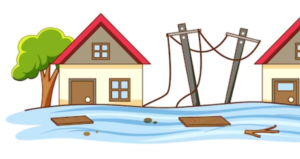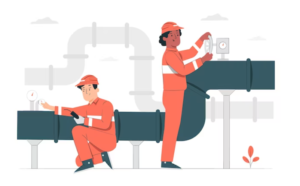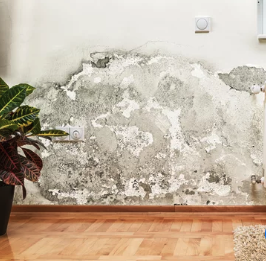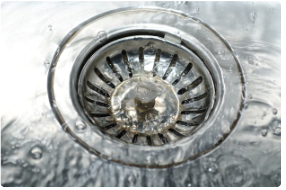Contaminated Water in crawl spaces needs cleaning, and deodorizing is essential to maintain the health and safety of the occupants, protect the property value, and prevent future contamination.
- Health and safety: can cause serious health problems if not properly cleaned and disinfected.
- Prevent structural damage: this can cause damage to the structure of the house, including flooring and walls.
- Maintain indoor air quality: this will help maintain good indoor air quality and prevent unpleasant odors.
- Protect property value: this will help maintain the property’s value.
- Prevent future contamination: will help prevent future contamination and reduce the risk of costly repairs.
Step-by-step process of cleaning and deodorizing Sewage and contaminated water in crawl space under the house
- Identify the source of the contamination. Wear protective clothing, gloves, and a respirator mask to prevent exposure to harmful bacteria and chemicals.
- Remove standing water
- Dispose of solid waste: such as dirty rags, paper, and debris.
- Clean surfaces: including flooring and walls, with a solution of hot water and a strong disinfectant, such as bleach.
- Ventilate the space
- Apply a deodorizing solution.
- Dry the space: Use fans and dehumidifiers to dry the crawl space thoroughly.
- Final inspection
- Maintenance: Regular maintenance and cleaning of the crawl space will help prevent future contamination and odors.
The risks associated with cleaning and deodorizing sewage and contaminated water in crawl spaces under a house include:
- Health hazards: can pose serious health risks, including respiratory problems, skin infections, and illnesses caused by harmful bacteria and chemicals.
- Structural damage: can lead to further damage to the house’s structure, including flooring and walls.
- Environmental contamination: can lead to environmental contamination and harm to wildlife and the ecosystem.
- Fire hazard: Certain cleaning and deodorizing products can pose a fire hazard, especially in areas with limited ventilation.
- Cost: can be expensive and require specialized equipment and techniques.
If you have sewage and contaminated water in your crawl space, you may consider contacting the following professionals for help:
- Water damage restoration company: They have the experience and equipment to safely clean and deodorize contaminated water and sewage in crawl spaces.
- Environmental contractor: They can assess the extent of the contamination and recommend the best course of action, including removing and disposing of contaminated materials.
- Plumber: They can help address the source of the contamination, such as a broken sewer pipe, and make necessary repairs to prevent future contamination.
- Health department: They can provide information and guidance on the best practices for cleaning and deodorizing contaminated water and sewage.
- Insurance company: They can provide information on what is covered under your insurance policy and help you file a claim for the damage caused by the contamination.
It is important to seek professional help to properly clean and deodorize contaminated water and sewage in crawl spaces to minimize risks and ensure the safety of the occupants and the environment.

 According to this standard, after a water leak, it is recommended to remove all wet materials, including drywall, flooring, and baseboards, to dry out the affected area and prevent mold growth effectively.
According to this standard, after a water leak, it is recommended to remove all wet materials, including drywall, flooring, and baseboards, to dry out the affected area and prevent mold growth effectively.




